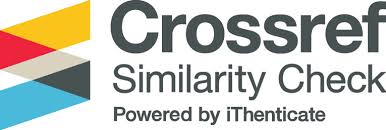Identification of Stevioside on Stevia Leaf Callus Grown by 2,4-D and Kinetin
Abstract
Stevia leaves are harvested because of their sweetness. This special characteristic is contributed by steviosida, rebaudiosida and dulkosida. Steviosida and rebaudiosida are low calorie, not able to be fermented by bacteria in the mouth and non carcinogenic. These superiorities make steviosida able to act as sugar subtitute, especially for diabetics; obese and as sweetener for toothpaste. The aim of this research was to find planting medium of Stevia leaf explants which is capable of producing the highest level of stevioside. The explants were grown in Surakarta. The medium was New Phaleonopsis (NP) within the addition of growth regulator substance, the combination of 2,4 Dichlorophenoxyacetic Acid (2.4-D), and Furfuril Amino Purin (kinetin) each by kinetin 1 ppm; 2,4-D 0.25 ppm and kinetin 0,75 ppm; 2,4-D 0,5 ppm as well as kinetin 0,5 ppm; 2,4-D 0,75 ppm and kinetin 0,25 ppm 2,4-D 1 ppm. Callus levels were macerated by n-butanol, then were analyzed by TLC densitometry. Stevioside levels in callus were compared with the steviosid levels in the original plants. The highest stevioside level was found in the callus grown in NP medium by adding 1 ppm kinetin, amounting to 10,625 ppm. The steviosid level was higher than the original plants. Stevioside level in Stevia leaf was 0,65 ppm.












